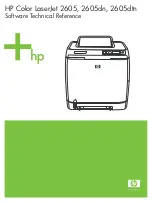
76
8:7 Fusor FX suite
Overview
FX can be used in the following ways in Fusor:
• 3 insert FX in each of the 3 synth channels
• 3 aux FX with sends from each synth channel
• 3 insert FX on the master output
Wet Mix control
With the exception of the Gain and EQ, all effect devices feature a
WetMix
control that allows you to blend between dry
and processed signals, for quick parallel processing.
Effect types
Gain
This is a very simple gain and pan device, but its parameters can be modulated via the FuseMod system for enveloping,
tremelo and auto-panning. The
Amp
control provides exponential gain from -inf. to +36dB, while the
Pan
control sets
the position in the stereo field.
AmpLin
provides a linear amplitude function, which is useful if you want to modulate the
amount of gain with an exponential source.
Gate (Noise Gate)
The Gate attenuates the signal until its amplitude reaches the
Threshold
level. The
Attack
and
Release
controls set the
speed at which the gate opens and closes after the signal goes above or below the threshold.
The
HPFreq
and
LPFreq
controls allow you to high-pass and low-pass filter the signal used for the amplitude-detection
circuit, while the
Preview
control allows you to listen to this signal.
Increasing the
Hysteresis
control smooths the gate’s response, at the expense of sensitivity to small changes around the
threshold level.
EQ
The 4-band EQ is great for refining the final output of a synth, especially
when layering synths together.
Each Band is selected using buttons
1
-
4
. All 4 parameters in each band can
be modulated via FuseMod. The EQ also features the Rel/Abs/Dif/Rnd edit
modes of the X4 quad effects (see below for details).
Bands 1 and 4 feature a control for switching between shelf and bell modes
(
LF-Bell
and
HF-Bell
), which is replaced by a
Q
control for the parametric
bands 2 (
LMF-Q
- low mid) and 3 (
HMF-Q
- high mid). All bands feature
power (
In
), frequency (
Freq
) and
Gain
controls.
EQ-Filter
The EQ-Filter provides simple 1-pole high-pass and low-pass filters. Each
filter features power (
LPin
and
HPin
) and frequency (
LPFreq
and
HPFreq
)
controls.
Comp Chan
This is a DCAM circuit-modelled channel compressor, based on a classic
‘limiting amplifier’ design. Increase the
Input
control to make the sound more compressed, and adjust the
Output
level as
required. Use the
Ratio
,
Attack
and
Release
controls to affect the compression characteristics.
Comp Bus
The Comp Bus is DCAM circuit model of a classic British console bus
compressor design, and features
Threshold
,
Ratio
,
Makeup
,
Attack
and
Release
controls.
The
Sidechain
control allows you to highpass-filter the signal used for the
amplitude-detection circuit, while the
Analogue Limit
control applies non-
linearities to the detection circuit, resulting in a compression characteristic
that is more transparent on attacks.
Delay
This is a classic stereo delay line. As well as
Time
and
Feedback
controls, it
features a
Swing
control for achieving a variety of delay feels, and adjustable
LowCut
and
HighCut
filters in the feedback chain.
The
Sync
control switches between time-based (Sec) and tempo-synced
(BPM) delay times. The
SumInput
control sums the left and right inputs to a
single mono signal and feeds one delay line instead of two.
Phaser
Flanger
Chorus
These are classic time and pitch modulation effects to add richness, movement and psychedelic character to the signal.
Содержание DCAM SYNTH SQUAD
Страница 1: ......
Страница 2: ......
Страница 26: ...26 Shaper Filter Amp sections...
Страница 109: ......
Страница 110: ......
















































